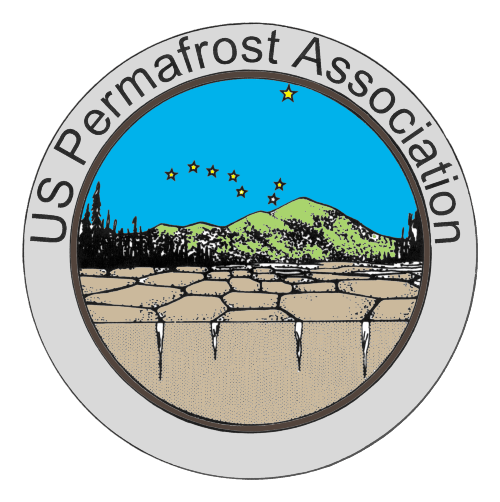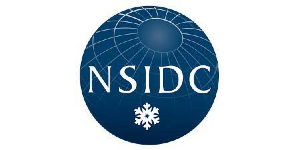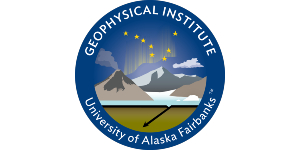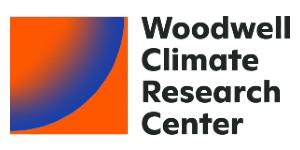|
2019014864 Masyagina, O. V. (Russian Academy of Science, Sukachev Institute of Forest, Krasnoyarsk, Russian Federation); Evgrafova, S. Yu.; Bugaenko, T. N.; Kholodilova, V. V.; Krivobokov, L. V.; Korets, M. A. and Wagner, D. Permafrost landslides promote soil CO2 emission and hinder C accumulation: The Science of the Total Environment, 657, p. 351-364, March 20, 2019.
Landslides are common in high-latitude forest ecosystems that have developed on permafrost. The most vulnerable areas in the permafrost territories of Siberia occur on the south-facing slopes of northern rivers, where they are observed on about 20% of the total area of river slopes. Landslide disturbances will likely increase with climate change especially due to increasing summer-autumn precipitation. These processes are the most destructive natural disturbance agent and lead to the complete removal of pre-slide forest ecosystems (vegetation cover and soil). To evaluate postsliding ecosystem succession, we undertook integrated ecological research at landslides of different age classes along the Nizhnyaya Tunguska River and the Kochechum River (Tura, Krasnoyarsk region, Russia). Just after the event (at the one-year-old site), we registered a drop in soil respiration, a threefold lower microbial respiration rate, and a fourfold smaller mineral soil carbon and nitrogen stock at bare soil (melkozem) plots at the middle location of the site as compared with the non-affected control site. The recovery of disturbed areas began with the re-establishment of plant cover and the following accumulation of an organic soil layer. During the 35-year succession (L1972), the accumulated layer (O-layer) at the oldest site contained similar C- and N stocks to those found at the control sites. However, the mineral soil C- and N stocks and the microbial biomass - even of the oldest landslide area - did not reach the value of these parameters in control plots. Later, the soil respiration level and the eco-physiological status of soil microbiota also recovered due to these changes. This study demonstrates that the recovery after landslides in permafrost forests takes several decades. In addition, the degradation of permafrost due to landslides clearly hinders the accumulation of soil organic matter in the mineral soil.
DOI: 10.1016/j.scitotenv.2018.11.468
2019014702 Biskaborn, Boris K. (Alfred Wegener Institute Helmholtz Centre for Polar and Marine Research, Potsdam, Germany); Smith, Sharon L. and Lantuit, Hugues. Permafrost is warming at a global scale: Nature Communications, 10(Article 264), illus. incl. sketch map, 53 ref., January 16, 2019.
Permafrost warming has the potential to amplify global climate change, because when frozen sediments thaw it unlocks soil organic carbon. Yet to date, no globally consistent assessment of permafrost temperature change has been compiled. Here we use a global data set of permafrost temperature time series from the Global Terrestrial Network for Permafrost to evaluate temperature change across permafrost regions for the period since the International Polar Year (2007-2009). During the reference decade between 2007 and 2016, ground temperature near the depth of zero annual amplitude in the continuous permafrost zone increased by 0.39±0.15°C. Over the same period, discontinuous permafrost warmed by 0.20±0.10°C. Permafrost in mountains warmed by 0.19±0.05°C and in Antarctica by 0.37±0.10°C. Globally, permafrost temperature increased by 0.29±0.12°C. The observed trend follows the Arctic amplification of air temperature increase in the Northern Hemisphere. In the discontinuous zone, however, ground warming occurred due to increased snow thickness while air temperature remained statistically unchanged.
DOI: 10.1038/s41467-018-08240-4
2019014862 Domine, Florent (Université Laval (Canada) and CNRS-INSU (France), Takuvik Joint International Laboratory, Quebec City, QU, Canada); Picard, Ghislain; Morin, Samuel; Barrere, Mathieu; Madore, Jean-Benoît and Langlois, Alexandre. Major issues in simulating some Arctic snowpack properties using current detailed snow physics models; consequences for the thermal regime and water budget of permafrost: Journal of Advances in Modeling Earth Systems, 11(1), p. 34-44, illus., 38 ref., January 2019.
Accurately simulating the physical properties of Arctic snowpacks is essential for modeling the surface energy budget and the permafrost thermal regime. We show that the detailed snow physics models Crocus and SNOWPACK cannot simulate critical snow physical variables. Both models simulate basal layers with high density and high thermal conductivity, and top layers with low values for both variables, while field measurements yield opposite results. We explore the impact of an inverted snow stratigraphy on the permafrost thermal regime at a high Arctic site using a simplified heat transfer model and idealized snowpacks with three layers. One snowpack has a typical Arctic stratification with a low-density insulating basal layer, while the other (called Alpine-type snowpack) has a dense conducting basal layer. Snowpack stratification impacts simulated ground temperatures at 5 cm depth by less than 0.3 °C. Heat conduction through layered snowpacks is therefore determined by thermal insulance rather than by stratification. Ground dehydration caused by upward water vapor diffusion is 4 times greater under Arctic stratification, leading to a larger latent heat loss, but also to a lower soil thermal conductivity caused by ice loss, so that the overall effect of dehydration on ground temperature is uncertain. Snowpack stratification is found to affect snow surface temperature by up to 4 °C. Lastly, different snow metamorphism rates lead to a lower Alpine snowpack albedo, contributing to a warmer ground. Quantifying all these effects is needed for adequately simulating permafrost temperature. This requires the development of a snow and soil model that describes water vapor fluxes. Abstract Copyright (2018), . The Authors.
DOI: 10.1029/2018MS001445
2019014863 Morel, X. (CNRM UMR 3589, Toulouse, France); Decharme, B.; Delire, C.; Krinner, G.; Lund, M.; Hansen, B. U. and Mastepanov, M. A new process-based soil methane scheme; evaluation over arctic field sites with the ISBA land surface model: Journal of Advances in Modeling Earth Systems, 11(1), p. 293-326, illus. incl. 6 tables, 129 ref., January 2019.
Permafrost soils and arctic wetlands methane emissions represent an important challenge for modeling the future climate. Here we present a process-based model designed to correctly represent the main thermal, hydrological, and biogeochemical processes related to these emissions for general land surface modeling. We propose a new multilayer soil carbon and gas module within the Interaction Soil-Biosphere-Atmosphere (ISBA) land-surface model (LSM). This module represents carbon pools, vertical carbon dynamics, and both oxic and anoxic organic matter decomposition. It also represents the soil gas processes for CH4, CO2, and O2 through the soil column. We base CH4 production and oxydation on an O2 control instead of the classical water table level strata approach used in state-of-the-art soil CH4 models. We propose a new parametrization of CH4 oxydation using recent field experiments and use an explicit O2 limitation for soil carbon decomposition. Soil gas transport is computed explicitly, using a revisited formulation of plant-mediated transport, a new representation of gas bulk diffusivity in porous media closer to experimental observations, and an innovative advection term for ebullition. We evaluate this advanced model on three climatically distinct sites : two in Greenland (Nuuk and Zackenberg) and one in Siberia (Chokurdakh). The model realistically reproduces methane and carbon dioxide emissions from both permafrosted and nonpermafrosted sites. The evolution and vertical characteristics of the underground processes leading to these fluxes are consistent with current knowledge. Results also show that physics is the main driver of methane fluxes, and the main source of variability appears to be the water table depth. Abstract Copyright (2018), . The Authors.
DOI: 10.1029/2018MS001329
2019014701 Nitze, Ingmar (Alfred Wegener Institute, Helmholtz Centre for Polar and Marine Research, Potsdam, Germany); Grosse, Guido; Jones, B. M.; Romanovsky, V. E. and Boike, Julia. Remote sensing quantifies widespread abundance of permafrost region disturbances across the Arctic and subarctic: Nature Communications, 9(Article 5423), illus. incl. sketch maps, 64 ref., January 23, 2019.
Local observations indicate that climate change and shifting disturbance regimes are causing permafrost degradation. However, the occurrence and distribution of permafrost region disturbances (PRDs) remain poorly resolved across the Arctic and Subarctic. Here we quantify the abundance and distribution of three primary PRDs using time-series analysis of 30-m resolution Landsat imagery from 1999 to 2014. Our dataset spans four continental-scale transects in North America and Eurasia, covering ~10% of the permafrost region. Lake area loss (~1.45%) dominated the study domain with enhanced losses occurring at the boundary between discontinuous and continuous permafrost regions. Fires were the most extensive PRD across boreal regions (6.59%), but in tundra regions (0.63%) limited to Alaska. Retrogressive thaw slumps were abundant but highly localized (<10-5%). Our analysis synergizes the global-scale importance of PRDs. The findings highlight the need to include PRDs in next-generation land surface models to project the permafrost carbon feedback.
DOI: 10.1038/s41467-018-07663-3
2019014180 Bai Ruiqiang (Chinese Academy of Sciences, Northwest Institute of Eco-Environment and Resources, Lanzhou, China); Lai Yuanming; Zhang Mingyi and Gao Jianqiang. Water-vapor-heat behavior in a freezing unsaturated coarse-grained soil with a closed top: Cold Regions Science and Technology, 155, p. 120-126, illus. incl. 3 tables, 33 ref., November 2018. Based on Publisher-supplied data.
A series of one-side freezing experiments with closed tops were performed to illustrate moisture migration and frost heave mechanisms of the coarse-grained soil for high speed railway subgrades in cold regions, as well as silty clay and standard sand as controls. The experimental results show that the pot effect can be formed in the soils with different unsaturated porosities when their tops are closed. The vapor migration and frost heave of unsaturated soils become more significant under larger temperature gradient. Water supply can not determine the formation of the pot effect, and only influence its intensity. Vapor migration is prominent when the initial water contents of soils are low (e.g. saturation of 30%), however, the water migration is dominant when the initial moistures of soils are high (e.g. saturation of 70%). It is also found that the initial water contents of the soils only influence the in-situ frost heave amounts; however, the total frost heave amounts are related to the combined actions of soil frost susceptibility and water migration, etc.
DOI: 10.1016/j.coldregions.2018.08.007
2019014174 Chen Lin (Chinese Academy of Sciences, Northwest Institute of Eco-environment and Resources, Laboratory of Frozen Soil Engineering, Lanzhou, China); Yu Wenbing; Yi Xin; Hu Da and Liu Weibo. Numerical simulation of heat transfer of the crushed-rock interlayer embankment of Qinghai-Tibet Railway affected by aeolian sand clogging and climate change: Cold Regions Science and Technology, 155, p. 1-10, illus. incl. 6 tables, 40 ref., November 2018. Based on Publisher-supplied data.
The crushed-rock interlayer (CRI) has been used to cool the railway embankment subbase and subgrade of the Qinghai-Tibet Railway (QTR) in permafrost regions. However, in addition to the climate change, aeolian sand clogging has been affecting this mitigation techniques aimed to increase heat extraction and reduce subsurface heat penetration by air convection through the voids of the CRI. Its long-term performance is evaluated herein using a numerical modelling. Simulation results demonstrate an unclogged CRI can mitigate permafrost warming for the first 20 years with a simulated increase in average air temperature by 0.052°C a-1. But after sand clogging, including both filling of voids in the CRI and covering of embankment slopes, its cooling performance is weakened. In such conditions, permafrost table is increasing and the permafrost is warming up under different mean annual air temperature (MAAT) of -4.5, -5.5, and -6.5°C. The water content of the aeolian sand can also affect the cooling effectiveness of CRI. A 1 m-thick dry sand cover can induce an increase in ground temperature. But wet sand layer can mitigate and delay the effect of climate change on the permafrost degradation. The sand-control measures and additional engineering techniques should be adopted to prevent the long-term thermal stability of the QTR in sandy permafrost zone of Qinghai-Tibet Plateau.
DOI: 10.1016/j.coldregions.2018.07.009
2019014190 Luo Jun (Harbin Institute of Technology, School of Civil Engineering, Harbin, China); Tang Liang; Ling Xianzhang and Geng Lin. Experimental and analytical investigation on frost heave characteristics of an unsaturated moderately expansive clay: Cold Regions Science and Technology, 155, p. 343-353, illus. incl. 3 tables, 40 ref., November 2018. Based on Publisher-supplied data.
Expansive clay, a kind of clayey soil, is widely distributed in seasonally frozen regions. Numerous studies have attempted to explain the frost heave characteristics of clayey soils, but few of them have paid attention to the frost heave characteristics of unsaturated expansive clay, especially considering the influence of swelling properties. In this study, a series of freezing temperature tests and step-freezing tests on an unsaturated moderately expansive clay and a silty clay were conducted. The silty clay was taken as a reference. The testing program, experimental results are presented and discussed, especially to the freezing point, evolution of temperature in the specimens at different elevations, water content distributions and cryostructures after freezing, frost heave during freezing, and state paths. In this regard, a physico-empirical approach is developed to obtain the relationship between freezing point and initial water contents. Experimental data show that the freezing point of expansive clay varies greatly with initial water contents. The obvious highly exothermic phase change occurs in expansive clay during the early stage of freezing with penetration decrease lagging behind. The heave amount of expansive clay is made up of the displacement caused by increasing water content in the unfrozen zone due to freezing-induced water flux and the frost heave. The state paths show significant variation of saturation and dry density of expansive clay after freezing and have a practical advantage of indicating the extent of possible expansion while thawing. On this basis, the state and variation of pore water are highlighted as the critical primary factors in determining the frost heave characteristics of unsaturated expansive clay in open system. Overall, this study further enhances the understanding of frost heave characteristics of the unsaturated moderately expansive clay.
DOI: 10.1016/j.coldregions.2018.08.023
2019014184 Varlamov, S. P. (Russian Academy of Sciences, Siberian Branch, Melnikov Permafrost Institute, Yakutsk, Russian Federation). Thermal monitoring of railway subgrade in a region of ice-rich permafrost, Yakutia, Russia: Cold Regions Science and Technology, 155, p. 184-192, illus. incl. 1 table, 35 ref., November 2018. Based on Publisher-supplied data.
This article presents the results of geocryological investigations conducted in the ice-rich permafrost section of the railway during the geotechnical exploration, design and construction stages, as well as prior to its permanent operation.Changes in the thermal regime of the subgrade and embankment soils have been quantified associated with the wide use of thermosyphons and insulation materials. The observations indicate rising of the permafrost table and cooling of the subgrade under high and low embankments, and active-layer deepening and ground temperature warming on the right-of-way along the railroad. Where a zero-slope fill is placed with removal of the active layer, perennial thaw bulbs have developed in the subsoil. Degradation of ice-rich permafrost is observed on the cut slopes and ditches in the cut sections. Thermosyphons on the berms in combination with Penoplex insulation have shown a cooling effect on the subgrade and permafrost table. Overhanging snow sheds on the embankment slopes have also proved to be beneficial in reducing subgrade temperatures.
DOI: 10.1016/j.coldregions.2018.06.016
2019014187 Wang Fei (Chinese Academy of Sciences, Northwest Institute of Eco-Environment and Resources, Lanzhou, China); Li Guoyu; Ma Wei; Mu Yanhu; Zhou Zhiwei and Mao Yuncheng. Permafrost thawing along the China-Russia crude oil pipeline and countermeasures; a case study in Jiagedaqi, northeast China: Cold Regions Science and Technology, 155, p. 308-313, illus. incl. 1 table, 40 ref., November 2018. Based on Publisher-supplied data.
The China-Russia Crude Oil Pipeline (CRCOP) traverses 441-km-long permafrost zones in northeastern China. Since the pipeline operation in 2011, significant ground surface subsidence occurred within the trench of the pipeline in warm and ice-rich permafrost zones. Oil temperatures from three pump stations were obtained and the soil temperatures around the pipe at two cross sections along the CRCOP in Jiagedaqi, northeast China were monitored during the period from 2011 to 2017. With the date records, permafrost thawing and thaw bulb development around the pipe were investigated in this study, as well as the cooling effect of thermosyphons experimentally installed around the pipe. Results showed that the mean monthly oil temperature ranged from 0.4 to 17.9°C and increased slowly with operation time increase. Due to thermal effect of the warm oil, the artificial permafrost table near the pipe was approximately 5.9 m greater than that in the natural ground 5 years after pipeline operation. A thaw bulb developed around the pipe and expanded at a rate of more than 1.0 m/a in depth. Following the permafrost thawing, ground subsidence around the pipe was significant. The buried depth of the pipe declined with a rate of approximately 0.35 m/a during the study period. To mitigate the permafrost thawing and the pipe settlement, a pair of thermosyphons were experimentally installed at the two sides of the pipe in March 2015. After 2 years of installation, the shallow foundation soils were cooled down and the thaw bulb was partially re-frozen. However, there was still a thawed layer beneath the pipe. Long-term thermal regime of foundation soils under the cooling effect of the thermosyphons needs further investigation.
DOI: 10.1016/j.coldregions.2018.08.018
2019014185 Wen Zhi (Chinese Academy of Sciences, Northwest Institute of Eco-Environment and Resources, Laboratory of Frozen Soil Engineering, Lanzhou, China); Zhelezniak, Mikhail; Wang Dayan; Ma Wei; Wu Qingbai; Yang Zhen; Zhirkov, Alexander and Gao, Qiang. Thermal interaction between a thermokarst lake and a nearby embankment in permafrost regions: Cold Regions Science and Technology, 155, p. 214-224, illus. incl. 1 table, 40 ref., November 2018. Based on Publisher-supplied data.
Linear engineering construction and changed climate on the Qinghai-Tibet Plateau have initiated significant thermokarst processes, which seriously deteriorates the thermal stability of nearby engineering infrastructure. The existence of embankments also has a potential thermal effect on nearby thermokarst lakes. However, this thermal interaction between an embankment and a thermokarst lake has not been fully understood. A series of numerical simulations were conducted to study the thermal interaction of thermokarst lake-embankment system in 50 years by a dynamic heat transfer model with phase change. Our simulated results indicate that the existence of the thermokarst lake has a significant thermal effect on nearby embankment, while the existence of the embankment has a slight thermal effect on nearby thermokarst lake. The influences of lake-bottom temperature, the distance between the lake and the embankment, the ground temperature and the ice content of permafrost on the thermal interaction were discussed.
DOI: 10.1016/j.coldregions.2018.08.010
2019014178 Wu Xiaoling (Hohai University, College of Hydrology and Water Resource, Nanjing, China); Zhang Xin; Xiang Xiaohua; Zhang, Ke; Jin Huijun; Chen Xi; Wang Chuanhai; Shao Quanqin and Hua Wenjuan. Changing runoff generation in the source area of the Yellow River; mechanisms, seasonal patterns and trends: Cold Regions Science and Technology, 155, p. 58-68, illus. incl. sketch map, 22 ref., November 2018. Based on Publisher-supplied data.
The hydrological regimes of the major rivers in cold regions of the world have changed remarkably since the 1960s, but the mechanisms underlying these changes have not yet been fully understood. Specifically, changes in freeze-thaw processes can affect the thicknesses of the permafrost layer and active layer, storage capacity for liquid water and subsequent surface runoff. In this study, we investigated the hydrological processes and runoff generation in the Yellow River source (YRS) region, which is located in a permafrost region, over the past four decades using ground observations. The impacts of runoff processes are assessed in terms of the spatiotemporal distributions of precipitation, air temperatures, and soil water dynamics in the active layer. The Mann-Kendall test and correlation analysis were employed to detect the variations in runoff and annual changes in influencing factors. Runoff generation in different periods was influenced by different main factors. In the spring flood and recession flow period (SP_FRP, which ranges from late March to mid-June), soil water storage played an important role in runoff generation. With the increased air temperature and enhanced soil ground thawing process, liquid water storage capacity of the soil increased, and constrained runoff. After the soil was saturated in the summer flood and recession flow period (SU_FRP, which ranges from late June to late October), runoff increased with precipitation. In the dry period (DP, which ranges from early November to Mid-March), little precipitation, high potential evaporation (308 mm) and increased air temperature (0.43°C/decade) caused decreases in snow accumulation and water content. Without a sufficient water supply, river runoff decreased in DP. These results show that precipitation played an important role in runoff generation in SU_FRP. In permafrost regions, the freeze-thaw processes of the active layer of soils, heavy evaporation and the air temperature play primary roles in runoff generation during SP_FRP and DP.
DOI: 10.1016/j.coldregions.2018.06.014
2019014175 Yin Xiao (Sichuan University, College of Water Resource and Hydropower, Chengdu, China); Liu Enlong; Song Bingtang and Zhang De. Numerical analysis of coupled liquid water, vapor, stress and heat transport in unsaturated freezing soil: Cold Regions Science and Technology, 155, p. 20-28, illus. incl. 2 tables, 33 ref., November 2018. Based on Publisher-supplied data.
Most existing empirical formulas and freezing models to describe the process of frost heave are established in saturated soil. However, most frozen soils in situ are unsaturated and vapor phase plays a critical role in the overall water, energy and stress balance. On the basis of existing frost heave models of saturated freezing soil, a mathematical model of coupled water, vapor, stress and heat movement is established here. Void ratio is an important variable adopted in the numerical simulation, which is related to variation of degree of saturation and used to describe the pore pressure distribution. In the proposed model, void ratio is also adopted as a criterion for the ice lens initiation and to establish the stress-deformation relation. The model is validated by comparisons of simulated results with reference model of saturated freezing soil. Seven cases are computed to study the coupled process in unsaturated freezing soil according to different initial and boundary conditions, including various degrees of saturation, temperature gradients and overburden pressures. The result shows that the impacts of different cases on frost heave properties and interactions among liquid water, vapor, temperature and stress fields. Finally, a representative unsaturated freezing case is adopted to investigate the temperature profiles, water and vapor content profiles and pore pressure profiles, respectively.
DOI: 10.1016/j.coldregions.2018.07.008
2019014189 Zheng, Hao (Hokkaido University, Faculty of Engineering, Sapporo, Japan); Kanie, Shunji and Niu Fujun. The thermal regime evaluation of high-speed railway foundation by mixed hybrid FEM: Cold Regions Science and Technology, 155, p. 333-342, illus. incl. 1 table, 33 ref., November 2018. Based on Publisher-supplied data.
The construction of high-speed railways in permafrost and seasonally frozen regions will disturb the local heat balance and affect the original thermal regime significantly. The accurate evaluation of thermal regime is the critical step of frost heave and thawing settlement predictions. In order to evaluate the thermal regime precisely, we adopt a modified Finite Element Method which is called as Mixed Hybrid FEM (MHF) in this study. MHF allows simultaneous computation of side temperature, element temperature, and heat flux. Since freezing rate can affect the accuracy of frost heave prediction, therefore direct element temperature obtained by MHF is highly significant for improving the accuracy of frost heave evaluation. In the thermal analysis, we consider the phase change of water and the latent heat influence by equivalent heat capacity method. To demonstrate the applicability of MHF in the application of thermal regime simulation, we compare the numerical simulation results obtained by MHF with field monitoring data from high-speed railway foundation. The real field monitoring data from high-speed railway foundation demonstrate that, under sine-curved air temperature changes, MHF shows a good accuracy for the thermal regime evaluation in high-speed railway foundation. Also, through the numerical simulation results of MHF, we compare the freezing depth in the first and second year to verify the influence of the construction to the thermal regime of natural ground. Through this study, we demonstrate that MHF could be applied for the thermal analysis of high-speed railway foundation successfully. The construction of high-speed railway increases the freezing depth in the first year. Moreover, we recommend adopting the MHF in the thermal analysis of frost heave and thawing settlement evaluation model due to its promising advantages.
DOI: 10.1016/j.coldregions.2018.08.021
2019014860 Ishikawa, Mamoru (Hokkaido University, Faculty of Environmental Earth Science, Sapporo, Japan); Jamvaljav, Yamkhin; Dashtseren, Avirmed; Sharkhuu, Natsagdorj; Davaa, Gamboo; Iijima, Yoshihiro; Baatarbileg, Nachin and Yoshikawa, Kenji. Thermal states, responsiveness and degradation of marginal permafrost in Mongolia: Permafrost and Periglacial Processes, 29(4), p. 271-282, illus., 22 ref., October 2018.
Ground thermal conditions in marginal permafrost in Mongolia were assessed using ground temperatures measured year-round at 69 borehole sites. Permafrost is continuous in northern Mongolia and exists as sporadic/isolated patches in the south. Ground temperatures are strongly controlled by local environmental factors, such as topographic depressions that concentrate cold air during winter, ice-rich strata that prevent penetration of sensible heat, and tree cover that reduces incident solar radiation. Permafrost temperatures are typically between -1 and 0°C; colder permafrost (<-2°C) occurs in the northern extent of continuous permafrost and at high elevations in the sporadic/isolated permafrost zones. Relict permafrost, which is thermally disconnected from seasonal air temperature fluctuations, is present near the latitudinal and elevational limits of perennially frozen ground. Cold and thermally responsive permafrost is dominant in the continuous and discontinuous zones, while warm and thermally unresponsive permafrost is dominant in the sporadic and isolated zones. Overall, the climate-driven permafrost in the colder regions is stable, while the ecosystem-driven permafrost in the warmer regions is degrading. Abstract Copyright (2019), John Wiley & Sons, Ltd.
DOI: 10.1002/ppp.1990
2019014859 Luo Dongliang (Chinese Academy of Sciences, Northwest Institute of Eco-Environment and Resources, Laboratory of Frozen Soil Engineering, Lanzhou, China); Jin Huijun; Jin, Xiaoying; He Ruixia; Li Xiaoying; Muskett, Reginald R.; Marchenko, Sergey S. and Romanovsky, Vladimir E. Elevation-dependent thermal regime and dynamics of frozen ground in the Bayan Har Mountains, northeastern Qinghai-Tibet Plateau, southwest China: Permafrost and Periglacial Processes, 29(4), p. 257-270, illus. incl. 2 tables, sketch map, 23 ref., October 2018.
To investigate and monitor permafrost in the Bayan Har Mountains (BHM), north-eastern Qinghai-Tibet Plateau, southwest China, 19 boreholes ranging from 20 to 100 m in depth were drilled along an elevational transect (4,221-4,833 m a.s.l.) from July to September 2010. Measurements from these boreholes demonstrate that ground temperatures at the depth of zero annual amplitude (TZAA) are generally higher than -2.0°C. The lapse rates of TZAA are 4 and 6°C km-1, and the lower limits of permafrost with TZAA<-1°C are approximately 4,650 and 4,750 m a.s.l. on the northern (near Yeniugou) and southern (near Qingshui'he) slopes, respectively. TZAA changes abruptly within short distances from -0.2 to +1.2°C near the northern lower limits of permafrost and from about +0.5 to +1.5°C near the southern lower limits of permafrost. Thawing and freezing on the ground surface at Qingshui'he (4,413 m a. s. l.) are 13.3 d earlier and 26 d later than that at Chalaping (4,724 m a. s. l.), respectively. The temperature gradient at Qingshui'he is clearly larger than that at Chalaping. The changes of permafrost TZAA ranged from 0.03°C to 0.2°C from 2010 to 2017. A 3.5-m-thick permafrost near Qingshui'he was observed to disappear in summer 2013. There is no significant correlation between elevation and permafrost temperature changes in the study area, whereas the changes of very warm (close to 0°C) permafrost seem to be slow in the intermontane basins. Abstract Copyright (2019), John Wiley & Sons, Ltd.
DOI: 10.1002/ppp.1988
2019014858 Rivkina, Elizaveta (Russian Academy of Sciences, Institute of Physicochemical and Biological Problems in Soil Science, Pushchino, Russian Federation); Abramov, Andrey; Spirina, Elena; Petrovskaya, Lada; Shatilovich, Anastasia; Shmakova, Lyubov; Scherbakova, Viktoria and Vishnivetskaya, Tatiana. Earth's perennially frozen environments as a model of cryogenic planet ecosystems: Permafrost and Periglacial Processes, 29(4), p. 246-256, illus. incl. 1 table, 40 ref., October 2018.
Permafrost and ice are important components of cryogenic planets and other bodies, which are abundant in the universe. Earth is one of many planets of the cold type. Earth's permafrost and ice provide an opportunity to test hypotheses that could be applied in the search for possible ecosystems and potential life on extraterrestrial cryogenic planets. Permafrost sediments in polar and alpine regions are natural ecosystems with a unique feature of low-temperature preservation of the biological material and its genetic information. Therefore, permafrost studies allow reconstruction of the events that occurred in the Cenozoic and the prediction of possible life that might have been preserved before the effect of anthropogenic factors on these ecosystems, and could be found within ice or permafrost on other cryogenic planets. Abstract Copyright (2019), John Wiley & Sons, Ltd.
DOI: 10.1002/ppp.1987
2019014861 Vasil'chuk, Yurij K. (Lomonosov Moscow State University, Geography and Geology Departments, Moscow, Russian Federation); Budantseva, Nadine A.; Farquharson, Louise M.; Maslakov, Alexey A.; Vasil'chuk, Alla C. and Chizhova, Julia N. Isotopic evidence for Holocene January air temperature variability on the east Chukotka Peninsula: Permafrost and Periglacial Processes, 29(4), p. 283-297, illus. incl. 5 tables, sketch map, 30 ref., October 2018.
Ice-wedge ice can provide a valuable record of past winter climate variability at high latitudes yet to date this proxy has been applied only sparsely across the Chukotka region of Siberia. Here we present data from eight ice-wedges at four sites across a 600-km transect in Eastern Chukotka which we use to reconstruct regional Holocene winter paleotemperature. The Holocene age of ice-wedges was established by radiocarbon dating of peat surrounding individual ice-wedges. Our suite of radiocarbon ages suggests that the studied ice-wedges formed between 12.9-11.8 and 3-2.5 cal ka BP. d18O and d2H values from ice-wedge ice indicate that in coastal areas of Eastern Chukotka mean January air temperatures in the first half of the Holocene were on average 2-3°S lower than modern values, a finding that corresponds well with winter climate reconstructions for the other areas of Beringia. The variability of reconstructed mean January air temperatures in the study area did not exceed 2-4°C during the early to mid-Holocene. Abstract Copyright (2019), John Wiley & Sons, Ltd.
DOI: 10.1002/ppp.1991
2019014857 Wang, Lingxiao (Ludwig-Maximilians-Universität München, Department of Geography, Munich, Germany); Jolivel, Maxime; Marzahn, Philip; Bernier, Monique and Ludwig, Ralf. Thermokarst pond dynamics in subarctic environment monitoring with radar remote sensing: Permafrost and Periglacial Processes, 29(4), p. 231-245, illus. incl. 5 tables, sketch map, 35 ref., October 2018.
Permafrost degradation can be monitored through changes in the surface area and depth of thermokarst ponds. Radar remote sensing allows for discrimination of thermokarst ponds of different depths across large areas because different water depths produce different ice regimes in winter. In this study, patterns in the spatial distribution of ice-cover regimes of thermokarst ponds in a typical discontinuous permafrost region are first revealed. Correlations of these ice-cover regimes with the permafrost degradation states and thermokarst pond development in two historical phases were analyzed and compared. The results indicate that the ice-cover regimes of thermokarst ponds are affected by soil texture, permafrost degradation stage and permafrost depth. Permafrost degradation is difficult to assess directly from the coverage area of floating-ice ponds and the percentage of all thermokarst ponds consisting of such floating-ice ponds in a single year. Therefore, continuous monitoring of ice-cover regimes and surface areas can help to elucidate the hydrological trajectory of the thermokarst process and permafrost state. Abstract Copyright (2019), John Wiley & Sons, Ltd.
DOI: 10.1002/ppp.1986
2019004713 Wilson, David (University of Waterloo, Department of Earth and Environmental Sciences, Waterloo, ON, Canada); Amos, Richard T.; Blowes, David W.; Langman, Jeff B.; Smith, Leslie and Sego, David C. Diavik waste rock project; scale-up of a reactive transport model for temperature and sulfide content dependent geochemical evolution of waste rock: Applied Geochemistry, 96, p. 177-190, illus. incl. 5 tables, 34 ref., September 2018.
The Diavik Waste Rock Project, located in a region of continuous permafrost in northern Canada, includes complementary field and laboratory experiments with the purpose of investigating scale-up techniques for the assessment of the geochemical evolution of mine waste rock at a large scale. As part of the Diavik project, medium-scale field experiments (~1.5 m high active zone lysimeters) were conducted to assess the long term geochemical evolution and drainage of a low-sulfide waste rock under a relatively simple (i.e. constrained by the container) flow regime while exposed to atmospheric conditions. A conceptual model, including the most significant processes controlling the sulfide-mineral oxidation and weathering of the associated host minerals as observed in a laboratory humidity cell experiment, was developed as part of a previous modelling study. The current study investigated the efficacy of scaling the calibrated humidity cell model to simulate the geochemical evolution of the active zone lysimeter experiments. The humidity cell model was used to simulate the geochemical evolution of low-sulfide waste rock with S content of 0.053 wt.% and 0.035 wt.% (primarily pyrrhotite) in the active zone lysimeter experiments using the reactive transport code MIN3P. Water flow through the lysimeters was simulated using temporally variable infiltration estimated from precipitation measurements made within 200 m of the lysimeters. Flow parameters and physical properties determined during previous studies at Diavik were incorporated into the simulations to reproduce the flow regime. The geochemical evolution of the waste-rock system was simulated by adjustment of the sulfide-mineral content to reflect the values measured at the lysimeters. The temperature dependence of the geochemical system was considered using temperature measurements taken daily, adjacent to the lysimeters, to correct weathering rates according to the Arrhenius equation. The lysimeter simulations indicated that a model developed from simulations of laboratory humidity cell experiments, incorporating detailed representations of temporally variable temperature and water infiltration, can be scaled to provide a reasonable assessment of geochemical evolution of the medium-scale field experiments.
DOI: 10.1016/j.apgeochem.2018.07.001
2019008908 Eriksen, H. O. (Norut Northern Research Institute, Tromso, Norway); Rouyet, L.; Lauknes, T. R.; Berthling, I.; Isaksen, K.; Hindberg, H.; Larsen, Y. and Corner, G. D. Recent acceleration of a rock glacier complex, Adjet, Norway, documented by 62 years of remote sensing observations: Geophysical Research Letters, 45(16), p. 8314-8323, illus. incl. geol. sketch maps, 45 ref., August 28, 2018.
Recent acceleration of rock glaciers is well recognized in the European Alps, but similar behavior is hardly documented elsewhere. Also, the controlling factors are not fully understood. Here we provide evidence for acceleration of a rock glacier complex in northern Norway, from 62 years of remote sensing data. Average annual horizontal velocity measured by aerial feature tracking increased from ~0.5 myr-1 (1954-1977) to ~3.6 myr-1 (2006-2014). Measured by satellite synthetic aperture radar offset-tracking, averages increased from ~4.9 to ~9.8 myr-1 (2009-2016) and maximum velocities from ~12 to ~69 myr-1. Kinematic analysis reveals different spatial-temporal trends in the upper and the lower parts of the rock glacier complex, suggesting progressive detachment of the faster front. We suggest that permafrost warming, topographic controls, and increased water access to deeper permafrost layers and internal shear zones can explain the kinematic behavior. Abstract Copyright (2018), . The Authors.
DOI: 10.1029/2018GL077605
2019008884 Keating, Kristina (Rutgers University at Newark, Department of Earth and Environmental Science, Newark, NJ); Binley, Andrew; Bense, Victor; Van Dam, Remke L. and Christiansen, Hanne H. Combined geophysical measurements provide evidence for unfrozen water in permafrost in the Adventdalen Valley in Svalbard: Geophysical Research Letters, 45(15), p. 7606-7614, illus. incl. geol. sketch maps, 45 ref., August 16, 2018.
Quantifying the unfrozen water content of permafrost is critical for assessing impacts of surface warming on the reactivation of groundwater flow and release of greenhouse gasses from degrading permafrost. Unfrozen water content was determined along an ~12-km transect in the Adventdalen valley in Svalbard, an area with continuous permafrost, using surface nuclear magnetic resonance and controlled source audio-magnetotelluric data. This combination of measurements allowed for differentiation of saline from fresh pore water, and frozen from unfrozen pore water. Above the limit of Holocene marine transgression, no unfrozen water was detected, associated with high electrical resistivity. Below the marine limit, within several kilometers of the coast, up to ~10% unfrozen water content was detected, associated with low resistivity values indicating saline pore water. These results provide evidence for unfrozen water within continuous, thick permafrost in coastal settings, which has implications for groundwater flow and greenhouse gas release in similar Arctic environments. Abstract Copyright (2018), . American Geophysical Union. All Rights Reserved.
DOI: 10.1029/2017GL076508
2019008883 Neilson, Bethany T. (Utah State University, Department of Civil and Environmental Engineering, Logan, UT); Cardenas, M. Bayani; O'Connor, Michael T.; Rasmussen, Mitchell T.; King, Tyler V. and Kling, George W. Groundwater flow and exchange across the land surface explain carbon export patterns in continuous permafrost watersheds: Geophysical Research Letters, 45(15), p. 7596-7605, illus., 45 ref., August 16, 2018.
Groundwater flow regimes in the seasonally thawed soils in areas of continuous permafrost are relatively unknown despite their potential role in delivering water, carbon, and nutrients to streams. Using numerical groundwater flow models informed by observations from a headwater catchment in arctic Alaska, United States, we identify several mechanisms that result in substantial surface-subsurface water exchanges across the land surface during downslope transport and create a primary control on dissolved organic carbon loading to streams and rivers. The models indicate that surface water flowing downslope has a substantial groundwater component due to rapid surface-subsurface exchanges across a range of hydrologic states, from unsaturated to flooded. Field-based measurements corroborate the high groundwater contributions, and river dissolved organic carbon concentrations are similar to that of groundwater across large discharge ranges. The persistence of these groundwater contributions in arctic watersheds will influence carbon export to rivers as thaw depth increases in a warmer climate. Abstract Copyright (2018), . American Geophysical Union. All Rights Reserved.
DOI: 10.1029/2018GL078140
2019009057 Schunemann, Adriano L. (Universidade Federal do Pampa, Sao Gabriel, Brazil); Almeida, Pedro Henrique A.; Thomazini, Andre; Fernandes Filho, Elpidio I.; Francelino, Marcio R.; Schaefer, Carlos E. G. R. and Pereira, Antonio Batista. High-resolution topography for digital terrain model (DTM) in Keller Peninsula, Maritime Antarctica: Anais da Academia Brasileira de Ciencias, 90(2, SUPPL.1), p. 2001-2010, illus. incl. sketch maps, 17 ref., August 2018.
High resolution topography (HRT) surveys is an important tool to model landscapes, especially in zones subjected to strong environmental changes, such as Antarctica, where landform is highly influenced by cryoclasty and permafrost melting. The aim of this work was to obtain a high accurate DTM for Keller Peninsula, Maritime Antarctica. The survey study was assessed in the 2014/2015 and 2015/2016 during the austral summer, by using Terrestrial Laser Scanner (TLS). In order to cover 8 km2 of the Peninsula, the TLS equipment was installed in 81 different points. Results of the DTM generated by TLS (hereafter, HRT-DTM), and the terrain variables Aspect, Slope and Hillshade obtained were compared with previous models generated by aerophotographic survey (hereafter, APG-DTM). RMSE for the HRT and APG-DTM were 0.726 and 2.397 m, respectively. Spatial resolution of the DTMs was 0.20 m. Morphometric variables obtained from the two methods presented visual differences on the thematic maps, especially related to the Aspect. Generalization was the main process, whereas interpolation occurred for the HRT survey, being the process of choice for the APG method. A large number of points are obtained by the TLS, providing a dense cloud of points, spatially well-distributed, enabling the generalization process to obtain surface models with high performance.
DOI: 10.1590/0001-3765201820170296
2019008091 Ulyantsev, A. S. (Russian Academy of Sciences, Shirshov Institute of Oceanology, Moscow, Russian Federation); Romankevich, E. A.; Bratskaya, S. Yu.; Semiletov, I. P. and Avramenko, V. A. Organic and carbonate carbon in permafrost and thawed deposits from Buor-Khaya Bay (Laptev Sea): Doklady Earth Sciences, 473(2), p. 467-471, illus. incl. 2 tables, sketch map, 15 ref., April 2017.
The distribution of organic and carbonate carbon in core samples from holes drilled in the shallow part of the Laptev Sea, in the region of Buor-Khaya Bay and Bykovskii Peninsula is considered. Significant heterogeneity in the distribution of carbon in the three columns studied is shown. Significant spatial heterogeneities in the distribution and burial of organic material (OM) under the conditions of a pulsing entrance of river and thermosabrasive material with repeated changes, as well as the mostly terrigenous origin of OM, are demonstrated. Copyright 2017 Pleiades Publishing, Ltd.
DOI: 10.1134/S1028334X17040237
|


 The USPA is pleased to announce the availability of an updated searchable database on permafrost-related publications. The American Geosciences Institute (AGI), with support from the National Science Foundation (NSF), has migrated the previous Cold Regions Bibliography to a new platform. Included are the USPA supported PMAs dating back to 2011. The Bibliography is searchable at
The USPA is pleased to announce the availability of an updated searchable database on permafrost-related publications. The American Geosciences Institute (AGI), with support from the National Science Foundation (NSF), has migrated the previous Cold Regions Bibliography to a new platform. Included are the USPA supported PMAs dating back to 2011. The Bibliography is searchable at 




















